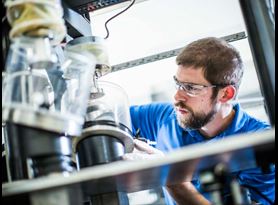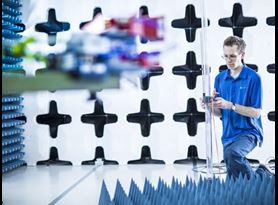Place devices in the hands of the user in a clinical or home environment to simulate actual use and discover any risks associated with use when you partner with Element for usability, or human factors, testing. Fulfill FDA requirements for the evaluation of devices the Agency considers most at risk for causing harm due to user error.
Element offers Formative and Summative human factors testing, supporting the entire product development lifecycle through validation. Let’s talk about your device and how Element’s human factors testing helps bring optimized devices to market.
Usability testing throughout the product lifecycle
There are two stages of human factors, or usability, testing:
Formative usability testing
The first stage of human factors testing, formative testing, happens during device development, and feedback from formative usability is often provided throughout device development. Formative testing is often an iterative cycle allowing for improvement during the development of a device. Participants in these studies give feedback to developers as products are designed and fine-tuned for performance. Moreover, interactions and ideas from the design team are included and carefully documented. Want to know more? Request information.
Summative usability testing
Summative testing is a validation of the device that will be released to end users. Summative usability includes the final user interface as well as any final labeling, instructions, and training. This testing is performed once the device has reached the final version of both software and hardware. It is also often carried out at intervals post-market to improve device usability and/or make marketing claims. Request more information about summative usability testing today.
How usability testing is conducted
Volunteer users are recruited based on the intended population of the product. For example, insulin delivery systems are tested by diabetic individuals in a controlled home environment, while duodenoscopes are tested by healthcare professionals in a clinical environment. Because a user’s medical condition could affect the way they use the device, correct population recruitment is essential to collecting useful data.
During a human factors study, enrolled volunteers are brought to Element’s facilities, or they are provided with the device during a home visit by our staff. After the user is trained on device instructions by our staff, the participant will walk through one “use” of the device as outlined by the manufacturer and the device manual. The process is observed by our staff. During “use,” specific criteria, established by the manufacturer, is evaluated. Any other observations or abnormalities are also noted. At the end of the study, feedback is provided to the sponsor. This feedback is incorporated into device development or regulatory submission. Looking to talk about your usability testing needs? Get in touch with us.
Why human factors testing is critical to medical device development
Although usability, or human factors testing, of a device is an easily overlooked key factor in medical device development, it is important because it evaluates both the user interface and the information provided to the user by the device.
While ensuring the device itself is accurate is of the highest priority, it is also crucial for the user to safely use the and correctly interpret the information it provides. Likewise, it is important to consider who will be using the device - the clinician or patient - and if any error on their part could potentially cause harm. So, let’s talk about your device and how human factors and usability testing can make a difference.
The Element advantage
Meet FDA requirements when you partner with Element to evaluate devices the Agency considers most at risk for causing harm due to user error. Successfully navigate complex regulations and discussions with regulatory bodies with Element by your side.
Interested in learning more about human factors and usability testing? Start the conversation.
Learn more

Medical Device Testing
As a comprehensive testing partner, you’ll enjoy the benefit of a single supplier source for all of your testing needs, from mechanical testing and environmental simulation to EMC and wireless device testing.

Medical Device Battery Testing
Element provides safety and certification testing for rechargeable lithium-ion and nickel metal hydride batteries used in hospital and home health applications.

EMI & EMC Testing
Element performs electromagnetic compatibility (EMC) and electromagnetic interference (EMI) testing for a variety of medical devices and components, including implantable devices, diagnostic tools and therapeutic equipment.

Medical Device Regulatory Services
Element’s regulatory advisors have 30 years of domestic and international regulatory consulting experience, specializing in handling the most complex challenges and partnering with you on the path to submission.

